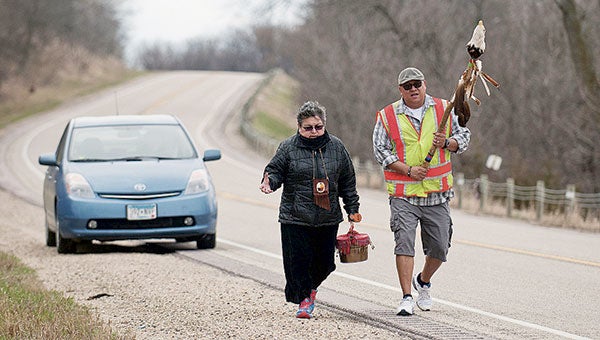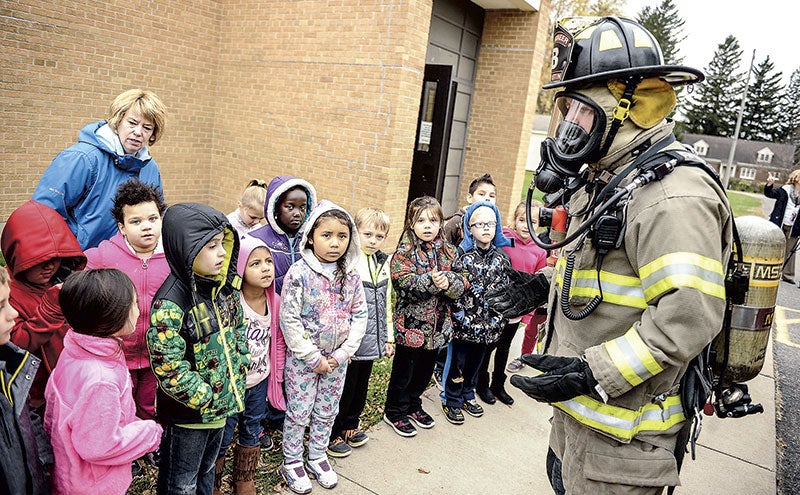Walkers highlight clean water need
Published 10:00 am Wednesday, March 30, 2016

Sharon Day walks along Highway 68 near Courtland, Minn., Tuesday with Frankie Jackson. Day is carrying water from the headwaters of the Minnesota River to its meeting point with the Mississippi River. Jackson is carrying a staff that’s for protecting the water carrier. Jackson Forderer for MPR News
By Mark Steil
MPR News/90.1
The Minnesota River — one of the state’s most polluted waterways — has been subject to clean-up efforts for decades. But there’s still a long way to go.
Runoff from some of the most productive farmland in the world drains into the river, and the Minnesota pays a price. So much soil and chemical pollution reach the waters that the Minnesota is a thick, cloudy brown where it joins the much clearer Mississippi River in the Twin Cities.
“The river, she doesn’t do anything, except flow,” said Ojibwe elder Sharon Day. “And it’s we humans that pollute her. So we’re the only ones that can clean it up.”
To highlight the problems, Day is leading a group of activists that is walking the length of the river this week, hoping to add a spiritual motivation to improve the waterway.
The Minnesota River walk is the most recent for Day. A few years back she walked the length of the Mississippi River.
On each trip the group carries a bucket of water dipped at the source of the river. When the bucket is emptied into the more polluted river at the end of the journey, Day says the act sends a message.
“To tell her, this is how you started out, and this is how we wish for you to be again.”
The Minnesota is blamed for sediment filling Lake Pepin on the Mississippi River, and it contributes to the Gulf of Mexico dead zone.
The 300-mile walk’s primary message to Minnesotans, Day says, is “don’t take water for granted.”
Their trek started Friday in Ortonville, Minn., near Big Stone Lake, the river’s source. The walk ends Friday near Fort Snelling, at the Minnesota-Mississippi confluence.
During most of the walk, the group won’t be able to see the river. But they can see some of the sources of its pollution.
Day said the walkers and their support team see few fields planted in cover crops to hold the soil in place and prevent it from washing into the river.




